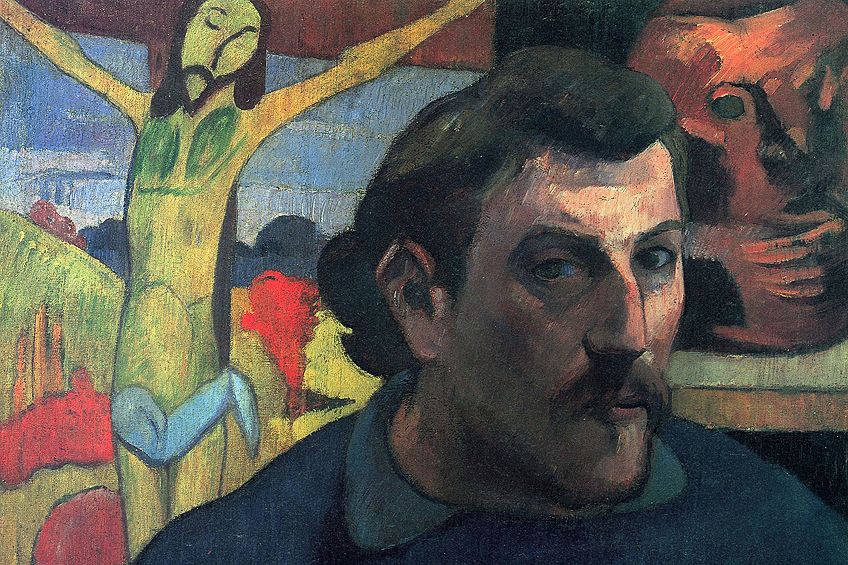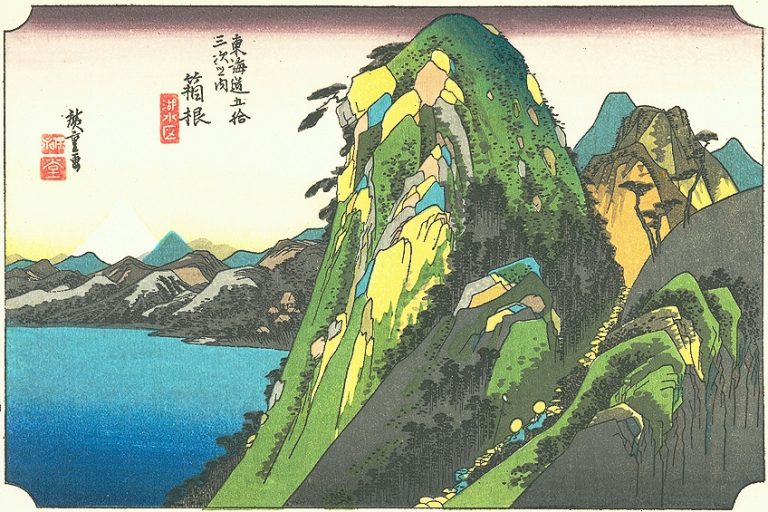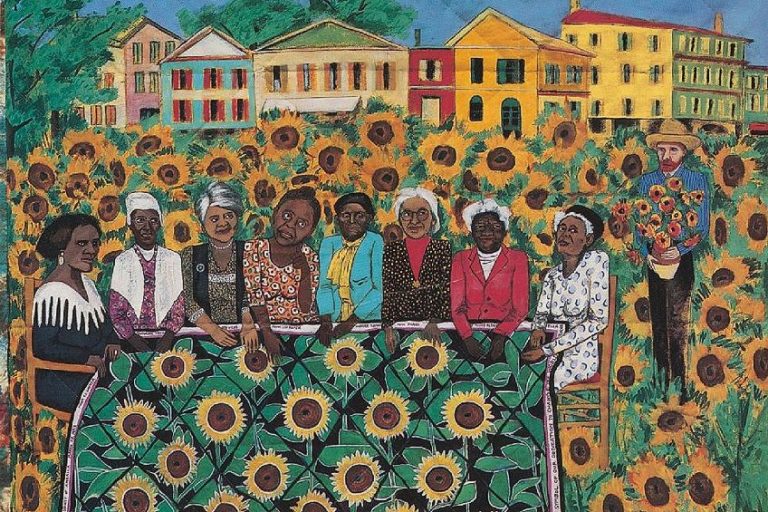Famous French Painters and Their 15 Most Popular Paintings
France has a long and rich art history stretching back to the Upper Paleolithic period when the region of Modern France was the epicenter for the art of ancient Europe, leaving behind majestic megaliths, and some of the finest examples of early Celtic art. During the periods that followed, and into the modern day, famous French artists have left us a legacy of sculpture, pottery, and paintings that have been considered the world leaders of styles like Gothic and Romanesque art.
Famous French Artists and Their Paintings
Art history is full of famous French artists, many of whom were Parisian painters, who have become absolute icons of the art world. Let us take a look at ten of the most famous French painters and the paintings they are most known for. It is important to note that while this list consists solely of male French painters, we are well aware of the omission of the many great female French artists from art history, the works of which should be recognized and applauded.

Eugène Delacroix (1798 – 1863)
| Nationality | French |
| Where Artist Lived | Paris |
| Associated Movements | Romanticism, Romanesque art |
| Famous Artworks | Liberty Leading the People (1830) The Death of Sardanapalus (1827) The Massacre of Chio (1824) |
Eugène Delacroix was the foremost artist of the French Romantic era in the 19th century and is considered to be the most significant French artist of his time. His vivid use of color and highly expressive brushstrokes greatly influenced Impressionism. Unlike Jean Auguste Dominique Ingres and other Neoclassical artists who sought perfectionism in form, Delacroix rather put a focus on movement and color.
His main influences came from painters such as Peter Paul Rubens of the Venetian Renaissance.
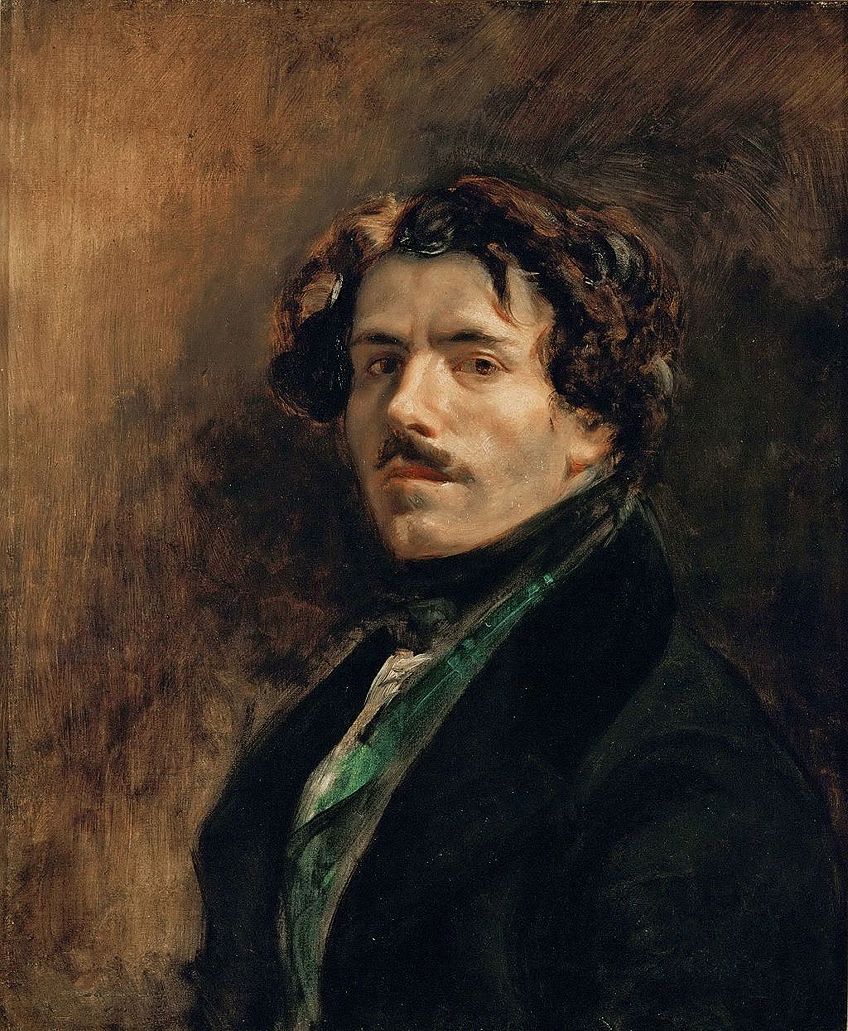
The central themes of his work were characterized by content that was romantic yet dramatic. He was not interested in the classical traditions of Roman and Greek art but instead sought to discover the exotic through traveling to places such as North Africa for inspiration. He was not sentimental nor did he wish to convey nationalist pride, but rather to portray passion in its most powerful and raw state in his art, such as the passion and will of the subjects in his masterpiece Liberty Leading the People.
Liberty Leading the People (1830)
| Date Painted | 1830 |
| Medium | Oil on Canvas |
| Dimensions | 2,6 m x 3,25 m |
| Current Location | Louvre Museum |
A semi-naked woman is the most prominent figure in this monumental French painting, as she is seen leading a determined group of revolutionaries through the fields of dead and dying soldiers. Throughout the history of art, she has been considered a classic symbol of the embodiment of liberty.
This painting is considered by most historians to be the Parisian painter’s most influential work, highlighting the differences in technique between the neoclassical style and the Romantic approach.
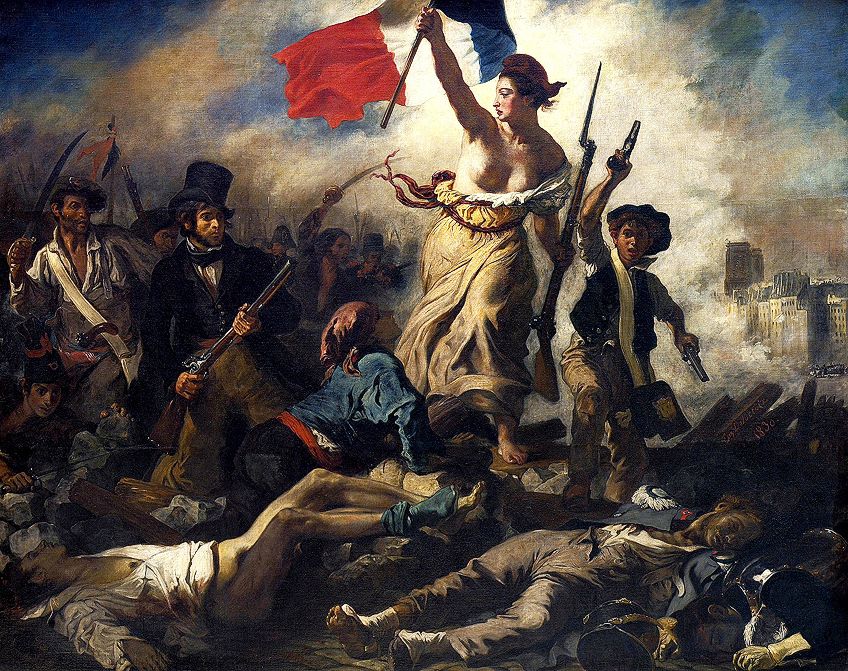
Liberty Leading the People was inspired by the political events unfolding at the time, yet Delacroix did not seek to glorify the event itself. Instead, he chose to instill a sense of liberty, by displaying an image that portrays the will of the people, fraternity, and equality, the motto of the French revolution. Initially, the painting was bought by the Government of France, but by 1832, its glorification of liberty was deemed by officials as being too inflammatory for public viewing.
Camille Pissarro (1830 – 1903)
| Nationality | French |
| Where Artist Lived | Paris, France |
| Associated Movements | Impressionism, Post Impressionism |
| Famous Artworks | Two Women Chatting by the Sea (1856) Jalais Hill, Pontoise (1867) Road to Versailles (1869) |
Camille Pissarro was born on the island of St. Thomas on the 10th of July, 1830. He was an Impressionist and Neo-Impressionist painter, with his greatest contributions having come from those two movements in particular. He studied from the forefathers of the movements, such as Jean-Baptiste-Camille Corot and Gustave Courbet, among others. His work in the Neo-Impressionist style began at a later stage when he was 54 years old.
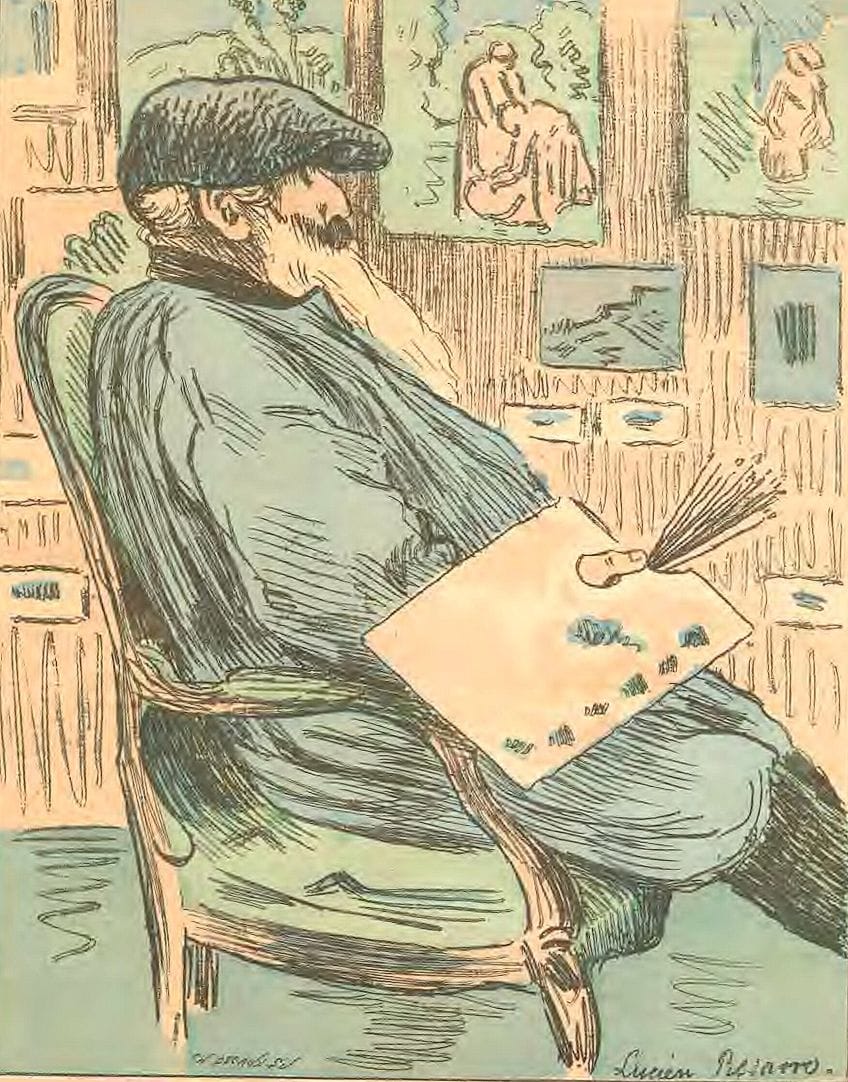
Pissarro’s role stretched beyond simply being a painter within the movement; he was also seen as a pivotal figure amongst Impressionist painters for his support of a collective of fifteen artists. He is the only artist to exhibit his work at every Impressionist exhibition in Paris.
He was said to be a father figure to many, not only Impressionists but to all the major succeeding artists working within Post Impressionism, including Vincent van Gogh, Georges Seurat, Paul Gauguin, and Paul Cézanne.
Two Women Chatting by the Sea (1856)
| Date Painted | 1856 |
| Medium | Oil on Canvas |
| Dimensions | 27.6 cm x 41 cm |
| Current Location | National Gallery of Art, Washington, D.C. |
This painting portrays two female figures from St. Thomas engaged in conversation while standing near the shore. In the distance, a raft of people can be seen floating in the water by the shoreline. A large basket on the head of the one woman creates shade for them both from the hot sun.
This woman has a scarf tied around her head and a white dress, and the other figure has a blue dress and seems to be carrying a woven basket that seems to be empty, hinting that they might be en route to the marketplace. It has been speculated that the scene matches one that can be viewed from just outside the city of Charlotte Amalie, leading many historians to believe that this is most likely the source of the inspiration for the landscape.
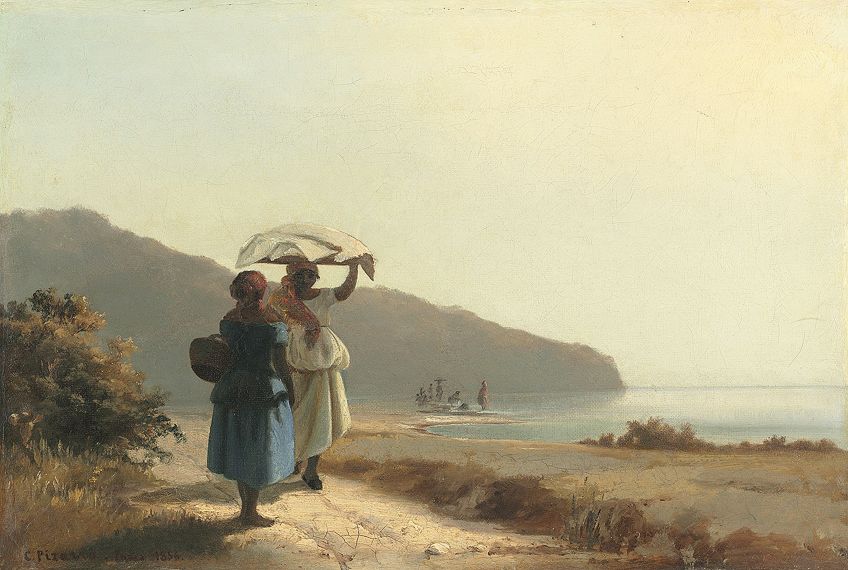
Edgar Degas (1834 – 1917)
| Nationality | French |
| Where Artist Lived | Paris |
| Associated Movements | Impressionism, Modern Art, Realism |
| Famous Artworks | The Ballet Class (1874) In a Cafe (1876) L’Absinthe (1876) |
Although Edgar Degas, born in Paris, France on July 19th, 1834, also worked with prints, drawings, and bronze sculptures, he is most well known for his Impressionist oil paintings. More than half of his paintings deal with the subject matter of dancers and dancing, the depiction of movement being of particular interest to him.
This interest can be seen in his paintings of dancers as well as those of bathing naked women and racing horses.
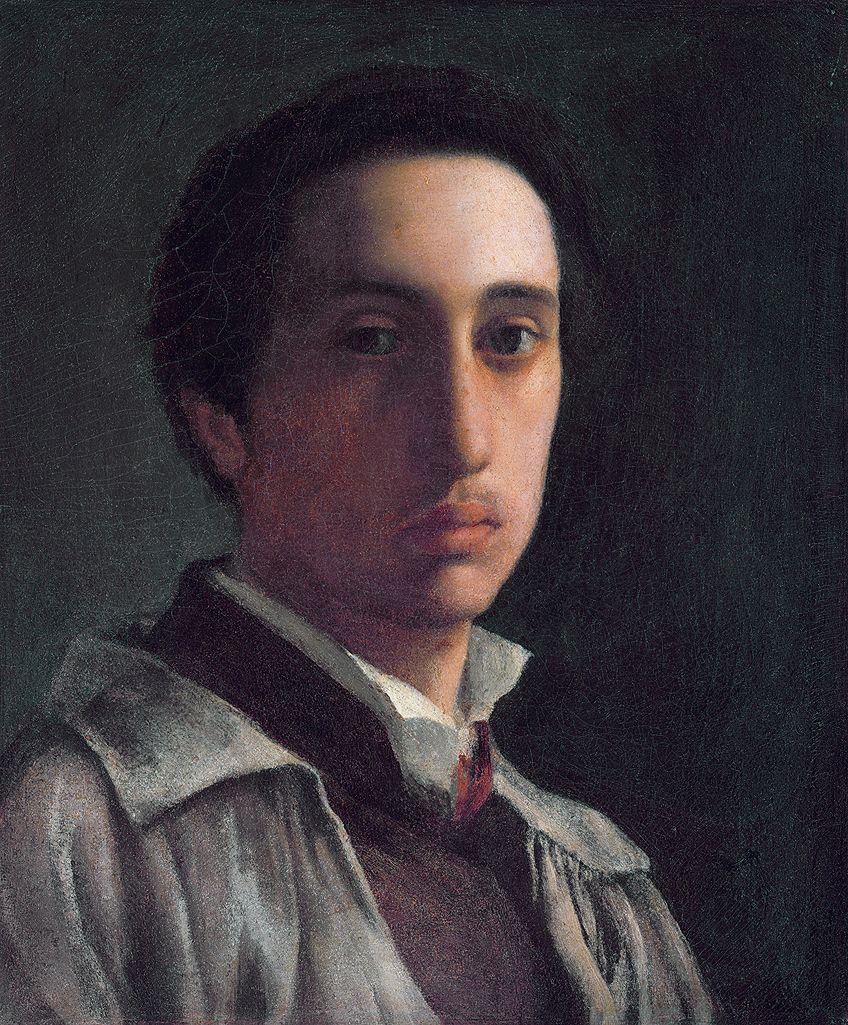
He also painted portraits that were noted for their ability to display intricate human complexities such as loneliness and despair. Degas is considered by many art historians as being one of the fathers of Impressionism, yet he did not like the term and preferred to be called a Realist. Unlike other Impressionists, many of his paintings depicted indoor scenes as opposed to the outdoor artworks created by his counterparts.
The Ballet Class (1874)
| Date Painted | 1874 |
| Medium | Oil on Canvas |
| Dimensions | 75 x 85 cm |
| Current Location | Musée d’Orsay, Paris, France |
This masterpiece from Edgar Degas was commissioned by Jean-Baptiste Faure and was created between 1871 and 1874. During this time, he momentarily put the painting on halt and produced a second, similar work for Jean-Baptiste. Degas was friends with the male figure seen in the painting, ballet master Jules Perrot.
The painting depicts the scene of a ballet room in the Paris Opera, where a ballet master is surrounded by his tired and weary students after a lesson. The students stretch and adjust their clothes as the teacher stands rigid on the right-hand side. This work is noted for its true-to-life rendition of spontaneous human gestures as well as for how the slightly heightened viewpoint enhances the vanishing perspective.
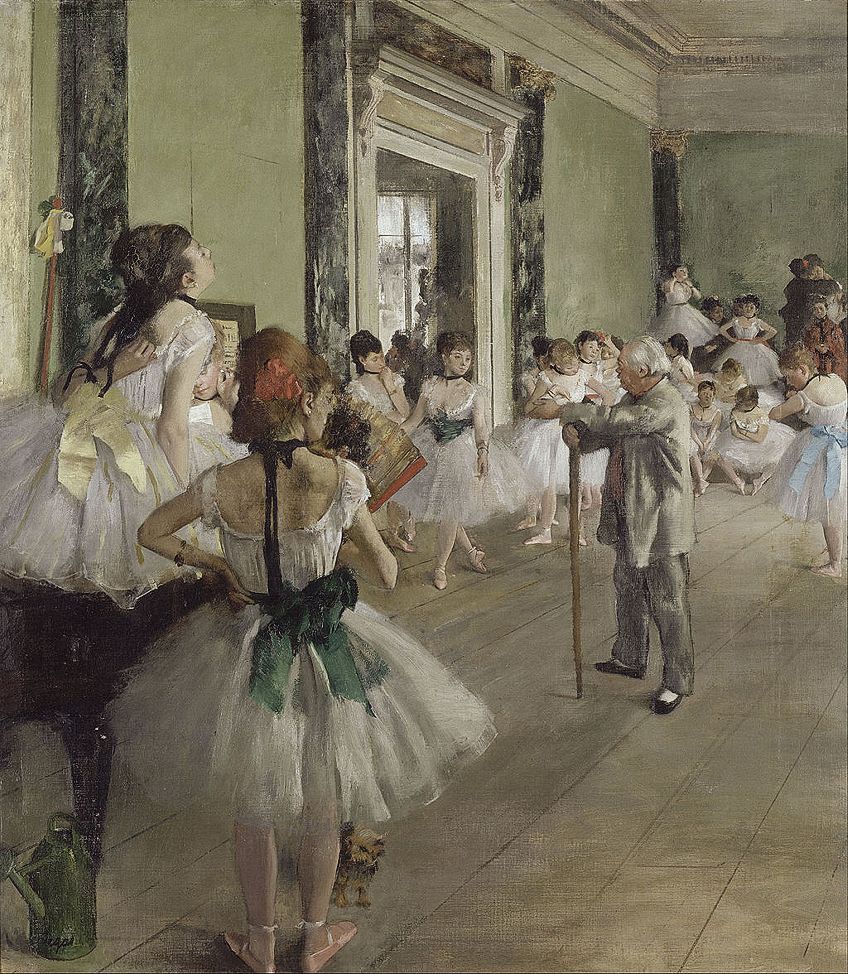
Paul Cézanne (1839 – 1906)
| Nationality | French |
| Where Artist Lived | Aix-en-Provence, France |
| Associated Movements | Post-Impressionism, Modern art, Impressionism, |
| Famous Artworks | The Bathers (1905) The Card Players Series (the 1890s) The Baskets of Apples (1890)
|
Paul Cézanne is the most famous French painter from the Post-Impressionist movement. He is known for bridging the gap between French painters of 19th Century Impressionism and Cubism, the most prominent movement in the early part of the 20th Century.
He was also known for exploring the concept of “geometric simplification”, whereby an apple would be represented by a sphere or the trunk of a tree represented by a cylinder.
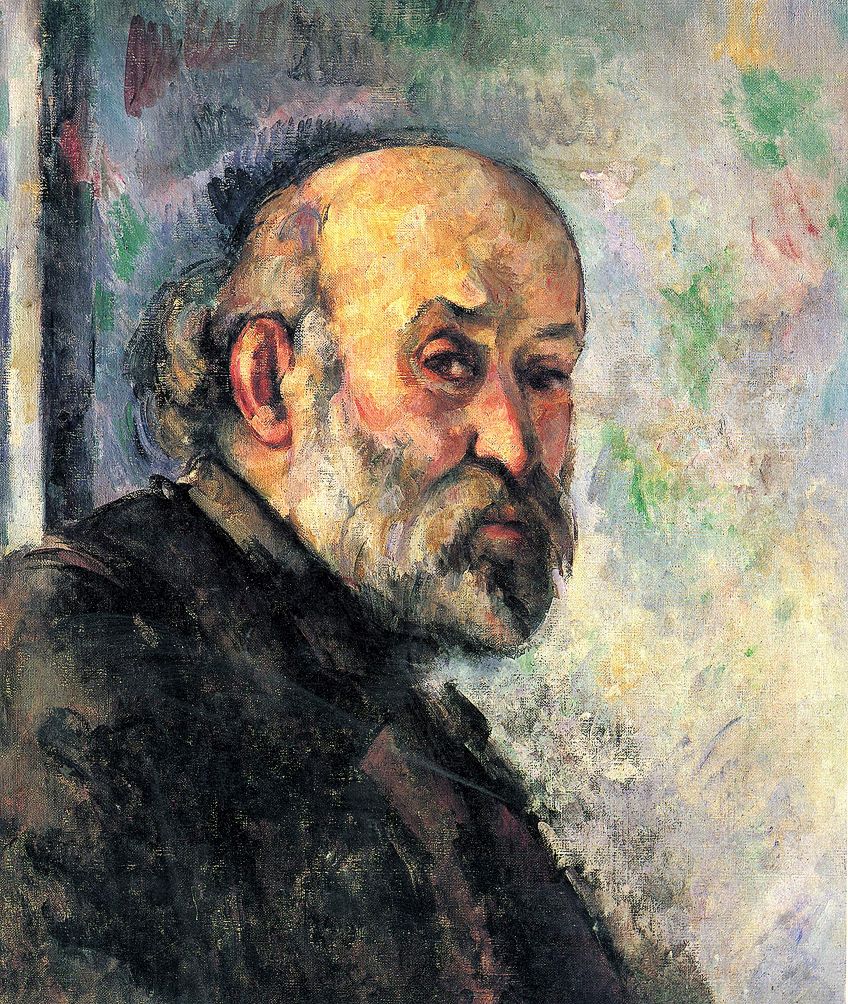
Paul Cézanne’s style is characterized by his use of exploratory and repetitive brushstrokes. With these brushstrokes, he created planes of color and built intricate fields by the repeating application of small brushstrokes. This conveys how intensely he studied his subjects. Many of his peers, such as Pablo Picasso and Henri Matisse, considered him the “father of us all.”
The Bathers (1898 – 1905)
| Date Painted | 1898 – 1905 |
| Medium | Oil on Canvas |
| Dimensions | 210.5 cm x 250.8 cm |
| Current Location | Philadelphia Museum of Art, Philadelphia, United States |
This famous French artist’s love of nature led him to paint masterful landscapes. However, he was not concerned with trying to capture photorealistic scenes, but rather to portray the essence of the scene. This scene of bathers next to a lake is not based on any existing real location but was rather painted from his imagination.
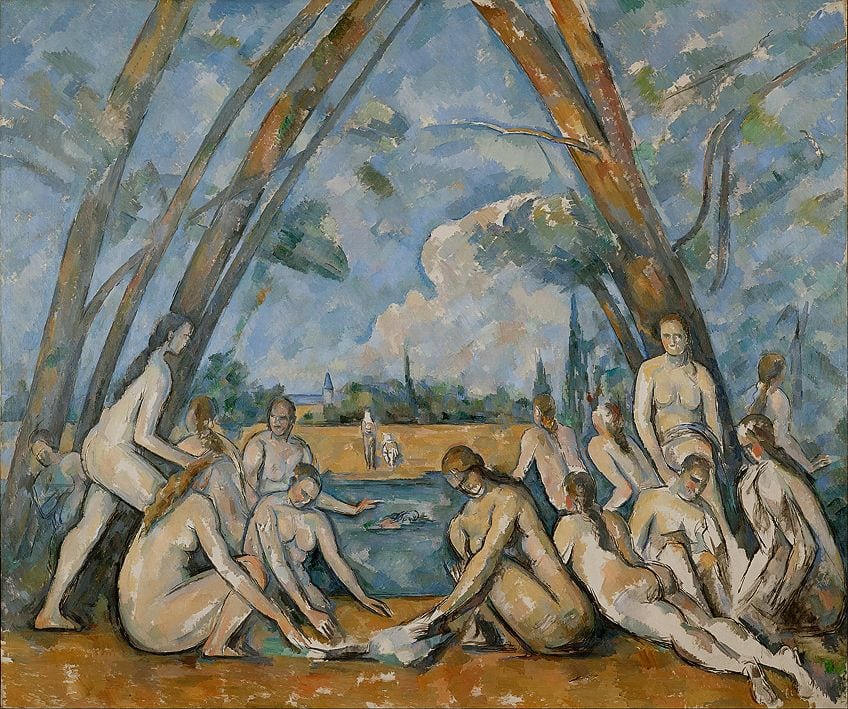
The Bathers is the famous French painter’s most well-known work and was part of a series of paintings of bathing figures. This was the biggest of the series and is often referred to as The Large Bathers to help historians distinguish it from his other works of the same period.
Currently housed at the Philadelphia Museum of art, this painting is considered the Parisian painter’s finest work.
Claude Monet (1840 – 1926)
| Nationality | French |
| Where Artist Lived | Paris, France |
| Associated Movements | Impressionism, Modern art, Realism |
| Famous Artworks | Impression, Sunrise (1872) Water Lilies series (1896 – 1926) Rouen Cathedral series (1892 – 1893) |
Born on the 14th of November, 1840, Oscar-Claude Monet is to be considered one of the most famous French painters of all time, and is considered the founder and father of Impressionism. He attempted to paint nature as he viewed it subjectively, and this has led to him being seen as a key precursor to the Modernist movement.
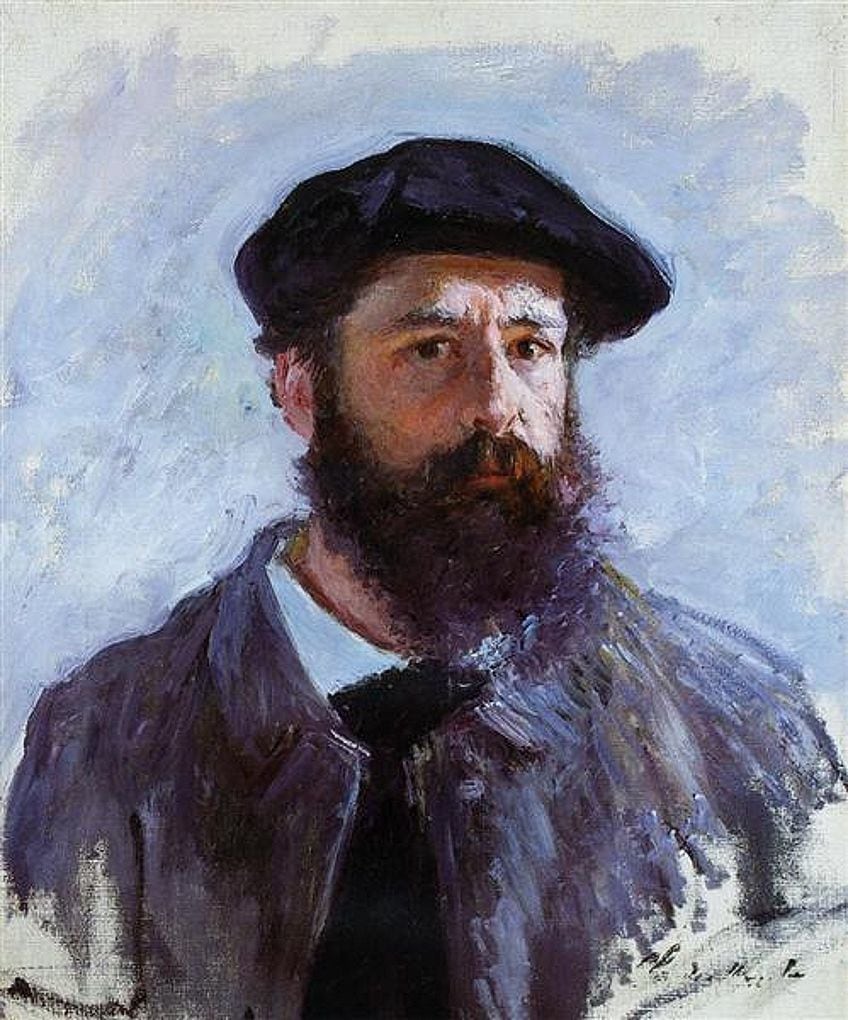
Throughout Monet’s illustrious career, he was famed for being the most prolific specialist of the philosophy of Impressionism, which puts the painter’s subjective perceptions before the objective view of nature, specifically applying to subject matter regarding landscapes and other outdoor scenes. His influence on the art movement can be noted by the adoption of the title of his painting Impression, Sunrise by the art movement, leading to the term “Impressionism”.
Impression, Sunrise (1872)
| Date Painted | 1872 |
| Medium | Oil on Canvas |
| Dimensions | 48 cm x 63 cm |
| Current Location | Musée Marmottan Monet, Paris |
This work depicts a sunrise experienced from the port of Le Havre. The focal elements that draw the eye into the canvas are the red sun and the rowboats in the foreground. More fishing vessels can be seen vaguely in the background, including ships and their masts as well as more small fishing boats.
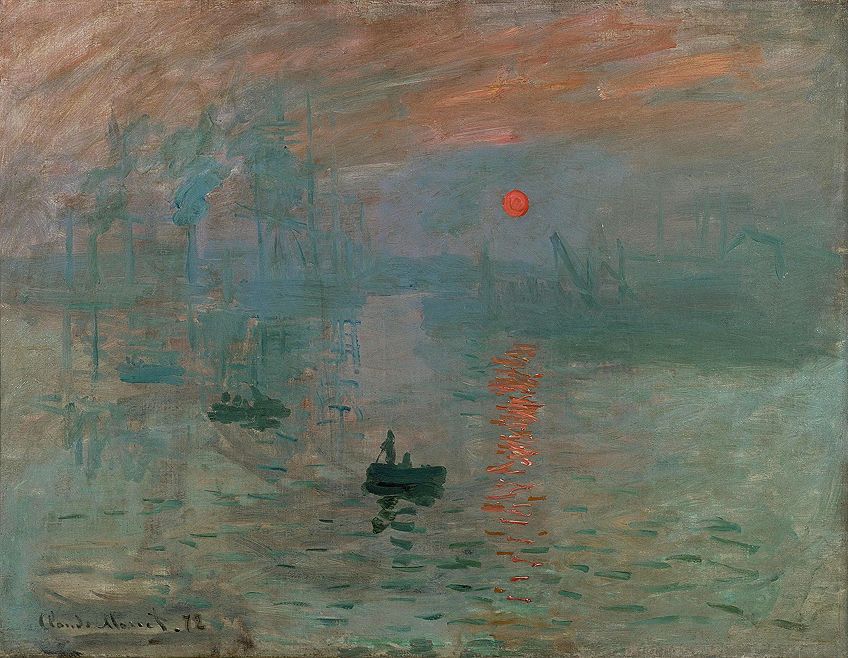
In Paris, 1984, Impression, Sunrise was first exhibited at a show that became known as the “Exhibition of the Impressionists”. Depicting Monet’s hometown port, this painting is so renowned and influential that an entire movement was named after it, thus cementing its importance amongst other French paintings from the same era.
It was momentarily stolen in 1985 by Philippe Jamin and Youssef Khimoun from the Musée Marmottan Monet, but was recovered and returned in 1990, where it was put back on display the following year.
Pierre-Auguste Renoir (1841 – 1919)
| Nationality | French |
| Where Artist Lived | Cagnes-sur-Mer, France |
| Associated Movements | Impressionism, Modern art |
| Famous Artworks | Dance at Le moulin de la Galette (1876) Luncheon of the Boating Party (1881) The Large Bathers (1887) |
Considered a leader amongst other French Impressionist movement painters, Pierre-Auguste Renoir was one of the most prolific french painters of the 19th century. He focused on painting intimate compositions of people in candid situations and poses. Renoir celebrated the feminine form and themes of beauty and sensuality, and it has been said by historians that the French artist’s work was the final representation of an old tradition that ran from Peter Paul Rubens to Jean-Antoine Watteau.
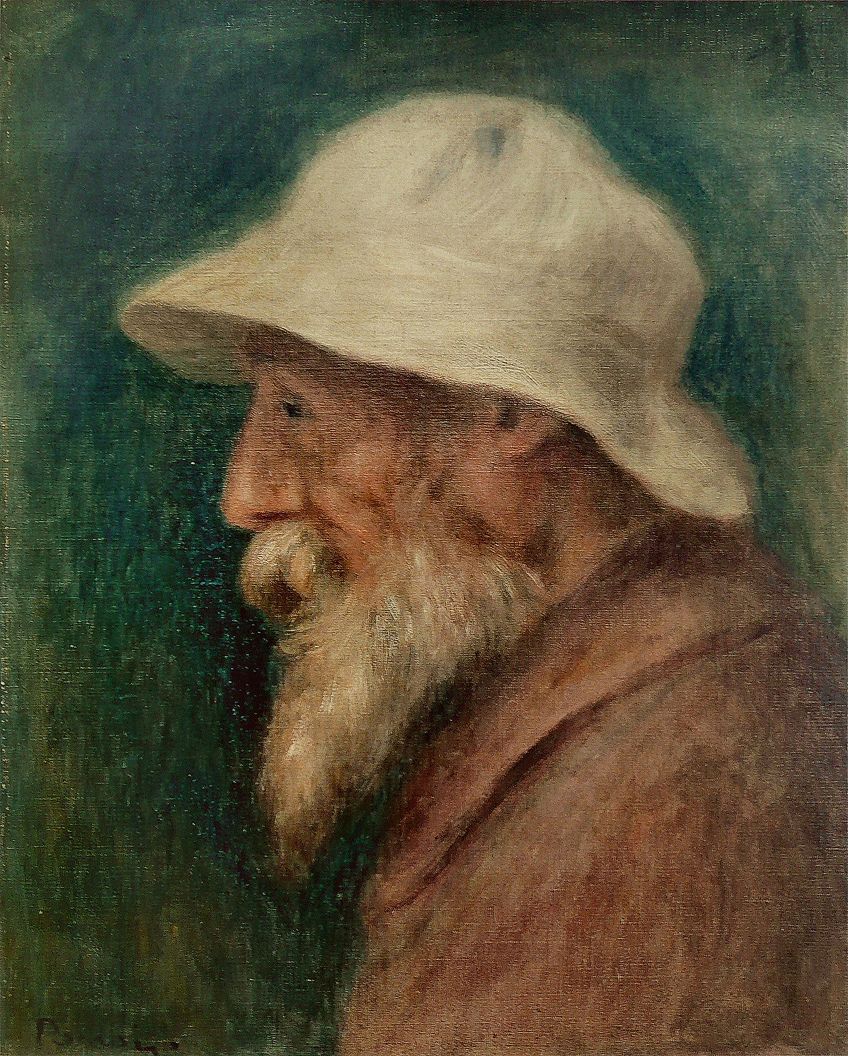
When Pierre-Auguste Renoir died on the 3rd of December, 1919, he left behind a legacy of Impressionist French paintings that have served as the influence for countless other artists who have followed in the Impressionist tradition, as well as other artistic movements that came after that period.
His style was characterized by suggesting the finer details of a painted scene by applying color through brushing freely, allowing the surroundings and figures to fuse softly and subtly with each other.
Dance at Le moulin de la Galette (1876)
| Date Painted | 1876 |
| Medium | Oil on Canvas |
| Dimensions | 131 cm x 175 cm |
| Current Location | Musée d’Orsay, Paris |
Considered one of the most celebrated French paintings, Renoir painted Dance at Le moulin de la Galette in 1876. The painting portrays a typical late 19th-century Sunday afternoon, when it was common for working-class French people to meet, dance, drink, and eat until late into the evening. As with Renoir’s other works, Dance at Le moulin de la Galette represents a moment of daily Parisian life in the typically Impressionist style of fluid brushstrokes and rich form.
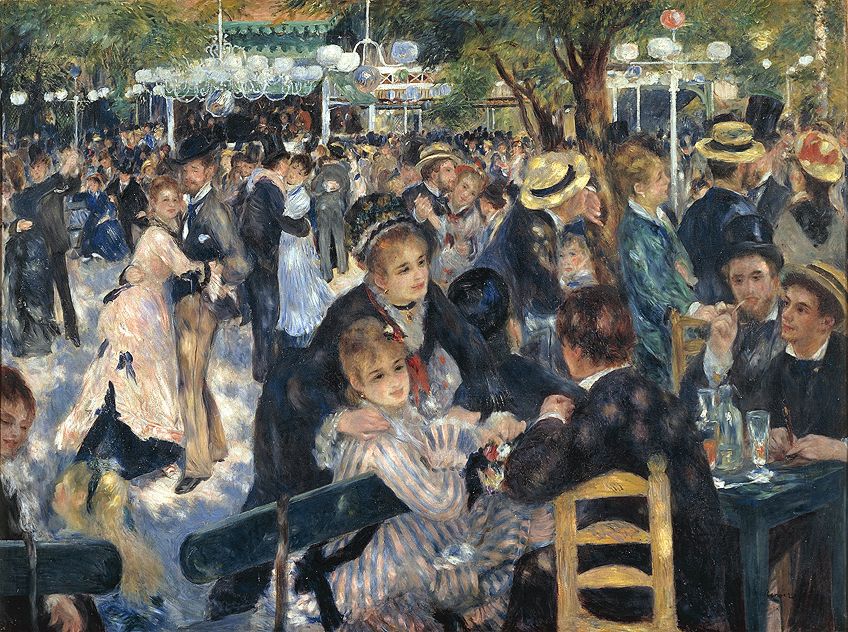
Gustave Caillebotte held the painting as part of his private collection from 1879 to 1894. To cover the duty taxes of his death in 1919, the French Republic took ownership of Renoir’s painting. Housed in the Musée du Luxembourg from 1896 to 1929, the painting was then moved to and exhibited in the Musée du Louvre. Finally, Dance at Le moulin de la Galette was moved to the Musée d’Orsay in 1986, where it can be viewed today.
Paul Gauguin (1848 – 1903)
| Nationality | French |
| Where Artist Lived | French Colony of Tahiti |
| Associated Movements | Post Impressionism, Impressionism, Symbolist |
| Famous Artworks | Tahitian Women on the Beach (1891) Where Do We Come From? What Are We? Where Are We Going? (1897) The Yellow Christ (1889)
|
Paul Gauguin is one of the most famous French painters from the post-Impressionist Era. Born in 1848, it wasn’t until after he died in 1903 that he gained posthumous fame for his artwork. Art historians now appreciate his Synthetist aesthetic and experimentation with color, distinguishing them from the works of the preceding Impressionist movement. He spent a decade towards the end of his life living in Tahiti, French Polynesia, and his paintings portray the local landscapes and inhabitants from that region.
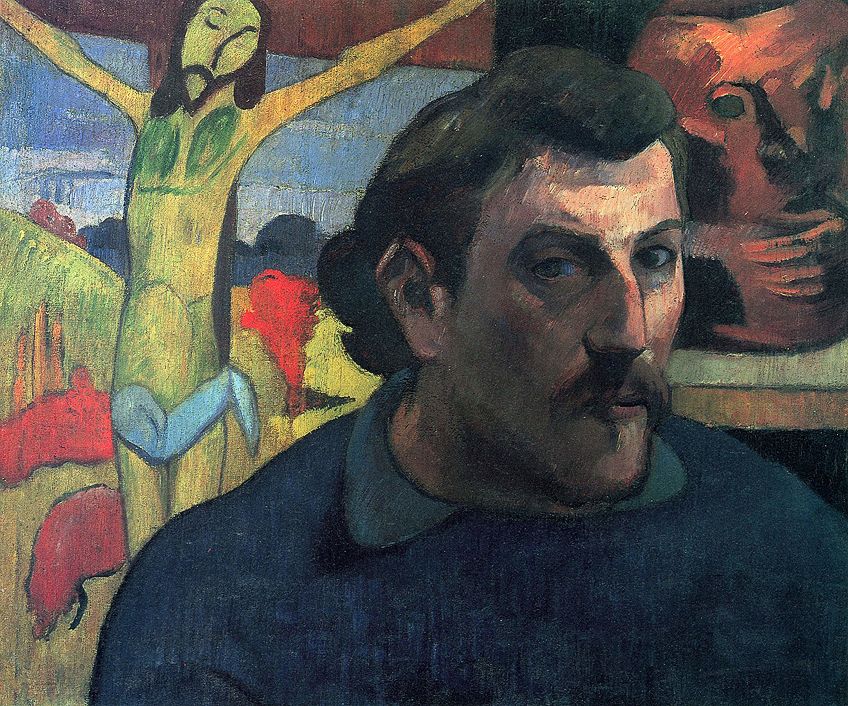
He is noted for having a strong influence on modern and avant-garde French artists, as well as inspiring artists such as Henri Matisse and Pablo Picasso. It was partially due to the dealer Ambroise Vollard and his posthumous exhibitions that led to the rise of popularity and appreciation of Gauguin’s work.
He was also a figurehead of the Symbolist movement and helped set the groundwork and ethos of the Primitivism movement.
Tahitian Women on the Beach (1891)
| Date Painted | 1891 |
| Medium | Oil on Canvas |
| Dimensions | 69 cm x 91 cm |
| Current Location | Musée d’Orsay, Paris |
Paul Gauguin arrived in Tahiti in June 1891, and it was during that summer he painted Tahitian Women on the Beach, an iconic artwork among other Post-Impressionist French paintings. Initially, he moved to Tahiti to escape the trappings of modern France and explore the uncivilized purity of life in Polynesia, but almost as soon as he arrived, he began painting the women and daily life of Tahiti. In Tahitian Women on the Beach, the Parisian painter created a scene of two women resting in the sand. One is facing the viewer while the other is looking downwards, apparently unaware of the viewer.
Neither of the figures is represented photo-realistically, but are instead depicted with distorted proportions, with dark outlines separating colors and mask-like faces.
The figures are dark in contrast to the light color of the sand they are resting in. In the background, the black sea and sand are broken by a strip of the green lagoon. In both the foreground and background, the contrasting colors emit a sense of duality.
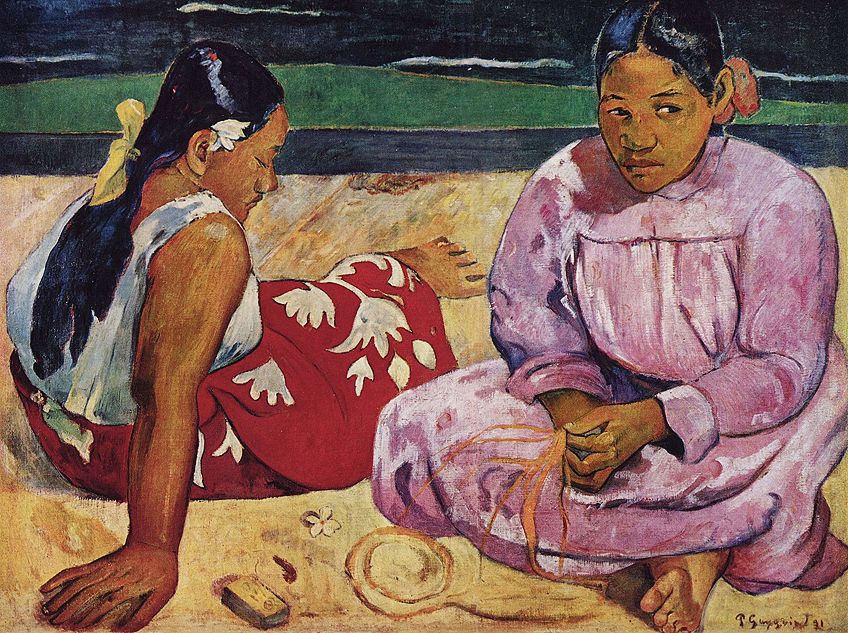
Henri de Toulouse-Lautrec (1864 – 1901)
| Nationality | French |
| Where Artist Lived | Saint-André-du-Bois, French Third Republic |
| Associated Movements | Post-Impressionism, Art Nouveau |
| Famous Artworks | Moulin Rouge: La Goulue (1891) In the Salon of the Rue des Moulins In Bed The Kiss (1892) |
Henri de Toulouse-Lautrec is known mostly for his late 19th century depictions of Parisian nightlife and the personalities and scenes associated with the city. This Parisian painter was known as the first person to take the aesthetics of advertising and elevate it to something more akin to fine art.
Toulouse-Lautrec is among the most famous French artists from the Post-Impressionist era, alongside peers such as Vincent van Gogh, Paul Gauguin, and Paul Cézanne.
Toulouse-Lautrec had a very difficult early life due to an unidentified medical condition, where his legs were very short, and he then broke them in adolescence. This led to a life of alcohol abuse and love for prostitutes, a subject matter that features regularly in his works of art. This can best be seen in his piece from 1891, Moulin Rouge: La Goulue.
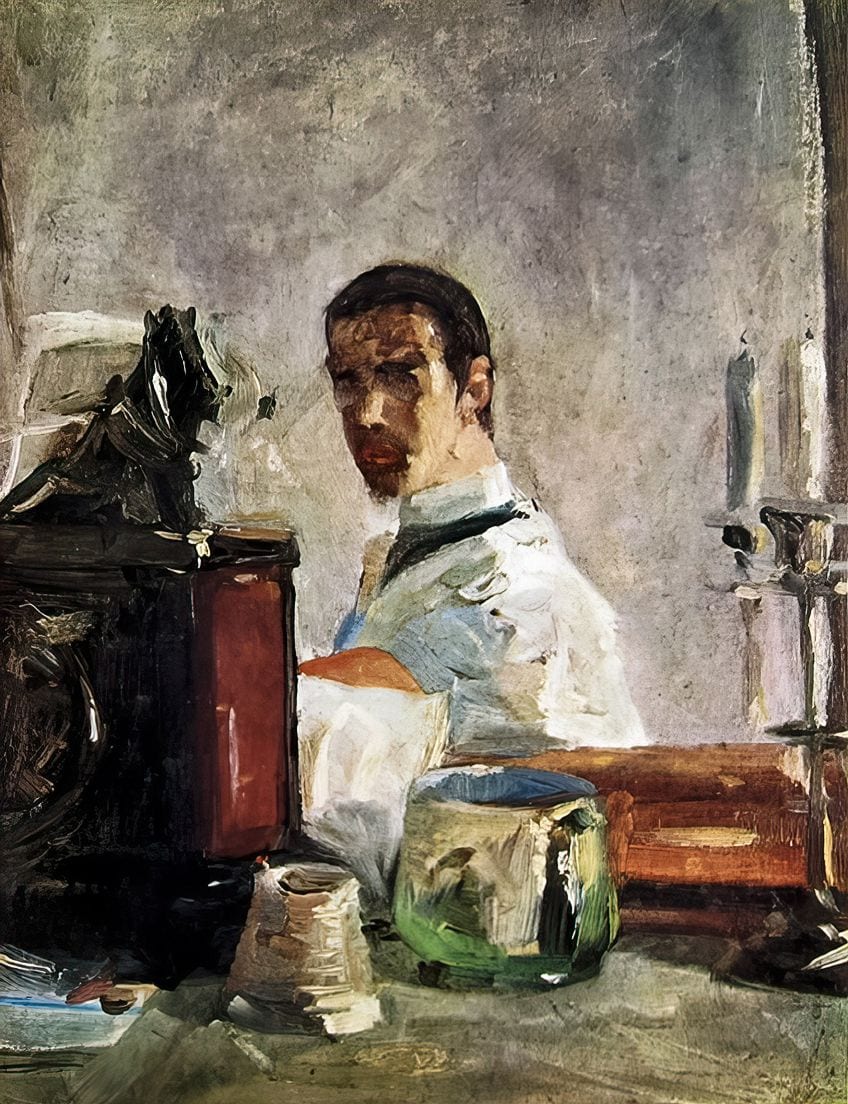
Moulin Rouge: La Goulue (1891)
| Date Painted | 1891 |
| Medium | Colour Lithograph |
| Dimensions | 170 cm × 118.7 cm |
| Current Location | Indianapolis Museum of Art |
Moulin Rouge: La Goulue (1891) depicts the world-famous Cancan dancer La Goulue, and Valentin le Désossé, her partner. This color lithograph was created to advertise the Moulin Rouge, a well-known club in France.
In the artwork, the audience has been reduced to simple, black silhouettes to create the effect of bringing the performers to the foreground, making them the main focus of the viewer’s attention.
Approximately 3,000 copies were originally pasted around town to advertise the club. This has resulted in most copies being lost to time, with only a few examples having survived the decades. These are now housed in various collections such as the Indianapolis Museum of Art as well as several other institutions of art.
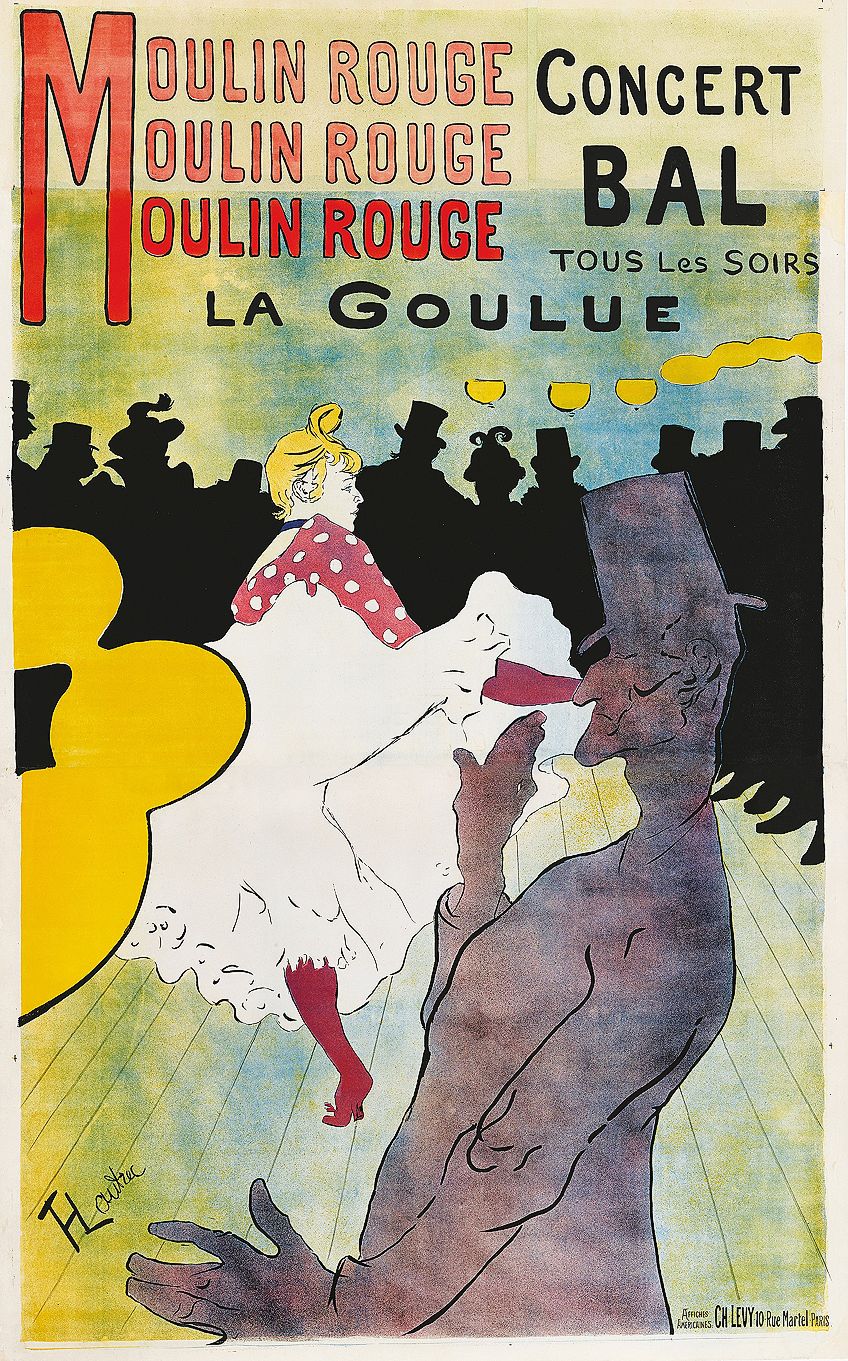
Henri Matisse (1869 – 1954)
| Nationality | French |
| Where Artist Lived | Nice, France |
| Associated Movements | Fauvism, Modernism, Post-Impressionism |
| Famous Artworks | La Danse (1910) Woman with a Hat (1905) The Joy of Life (1906)
|
Henri Matisse is considered by many art historians to be one of the most influential artists of Modern art and the finest colorist of the 20th Century, working in a multitude of mediums, including painting, printmaking, paper cut-outs, and sculpture. This famous French painter is mostly known for his artwork in the style of Fauvism.

Alongside peers such as Picasso, many regard Matisse as being a prominent artist that helped delineate the emerging revolutionary developments of the visual arts through the early years of the 20th century. For more than half a century, he displayed a body of work that represented his mastery of expressively used color, earning him recognition as an important and influential figure in modern art.
La Danse (1910)
| Date Painted | 1910 |
| Medium | Oil paint |
| Dimensions | 2,6 m x 3,91 m |
| Current Location | State Hermitage Museum |
This masterpiece by Henri Matisse portrays five figures engaged in a circular dance. The figures were painted in vivid red and set against a simplified interpretation of a deep blue sky and featureless green landscape. La Danse, which is the French word for “dance,” stands out from other French paintings as it represented a key point of Matisse’s influence in the development of modern painting during his career.
La Danse was painted in 1910, commissioned by Sergei Shchukin, a Russian art collector and businessman, who then entrusted the painting to the Hermitage Museum in Saint Petersburg, Russia. Before the Revolution in 1917, La Danse and another of Matisse’s works Music had hung in Shchukin’s large mansion on the walls of the staircase.
There was another version that preceded this painting, titled “Dance (1)”, but it was made in pastel and has less detail than the later version, serving as a compositional study.
Georges Braque (1882 – 1963)
| Nationality | French |
| Where Artist Lived | Paris, France |
| Associated Movements | Fauvism, Cubism, Expressionism |
| Famous Artworks | Bottle and Fishes (1910) Fruit Dish and Glass (1912) Houses at l’Estaque (1908) |
Born on the 13th May 1882, Georges Braque was a highly influential French artist of the 20th century, as well as a draughtsman, sculptor, printmaker, and collagist. His most noted contribution to the history of art is his work within the Fauvist movement of the early 1900s, as well as his important work relating to the development of Cubism.
His work during 1908 and 1912 is often associated with that of Pablo Picasso, a peer of even greater recognition and fame within the art community. However, during this period, the work produced by both Cubist artists was virtually indistinguishable from one another. One of the finest examples of Georges Braque’s work is the masterpiece Bottle and Fishes (1910).

Bottle and Fishes (1910)
Throughout his painting career, Georges Braques portrayed both fish and bottles in his various artworks. They served as a common theme through his various forays into different styles, standing as identifiable markers that help differentiate these various styles. During this period, Braques worked alongside Picasso, which then led to his experimentation with Analytic Cubism.
Bottle and Fishes (1910) serves as a prime example of his work in the style of Analytic Cubism, one that helped elevate Braques to the level of French masters. This painting works within the confines of a restricted palette of earth tones, making objects barely perceptible as they disappear along the horizontal plane. Typical of his early works, the lines tend to be either vertical or horizontal in their composition – in this particular painting, there are some diagonal lines, but most are vertical.
We have now learned about 10 Famous French painters that all had an influential impact on the French and global art movements. These French artists contributed hugely to styles such as Impressionism, Neo-Impressionism, Cubism, Fauvism, and many more.
Take a look at our French artists webstory here!
Frequently Asked Questions
Which Styles Did Famous French Painters Prefer to Work In?
French artists between the 19th century and 20th centuries favored styles such as Impressionism, Post Impressionism, Cubism, and Fauvism, among others.
Who Is the Most Famous French Artist?
Most historians tend to agree that Claude Monet is arguably the most famous artist to have come out of France, although there are many other artists who are equally respected for their contributions in their various movements, such as Matisse, Manet, and Renoir.
Isabella studied at the University of Cape Town in South Africa and graduated with a Bachelor of Arts majoring in English Literature & Language and Psychology. Throughout her undergraduate years, she took Art History as an additional subject and absolutely loved it. Building on from her art history knowledge that began in high school, art has always been a particular area of fascination for her. From learning about artworks previously unknown to her, or sharpening her existing understanding of specific works, the ability to continue learning within this interesting sphere excites her greatly.
Her focal points of interest in art history encompass profiling specific artists and art movements, as it is these areas where she is able to really dig deep into the rich narrative of the art world. Additionally, she particularly enjoys exploring the different artistic styles of the 20th century, as well as the important impact that female artists have had on the development of art history.
Learn more about Isabella Meyer and the Art in Context Team.
Cite this Article
Isabella, Meyer, “Famous French Painters and Their 15 Most Popular Paintings.” Art in Context. August 19, 2021. URL: https://artincontext.org/famous-french-painters/
Meyer, I. (2021, 19 August). Famous French Painters and Their 15 Most Popular Paintings. Art in Context. https://artincontext.org/famous-french-painters/
Meyer, Isabella. “Famous French Painters and Their 15 Most Popular Paintings.” Art in Context, August 19, 2021. https://artincontext.org/famous-french-painters/.


